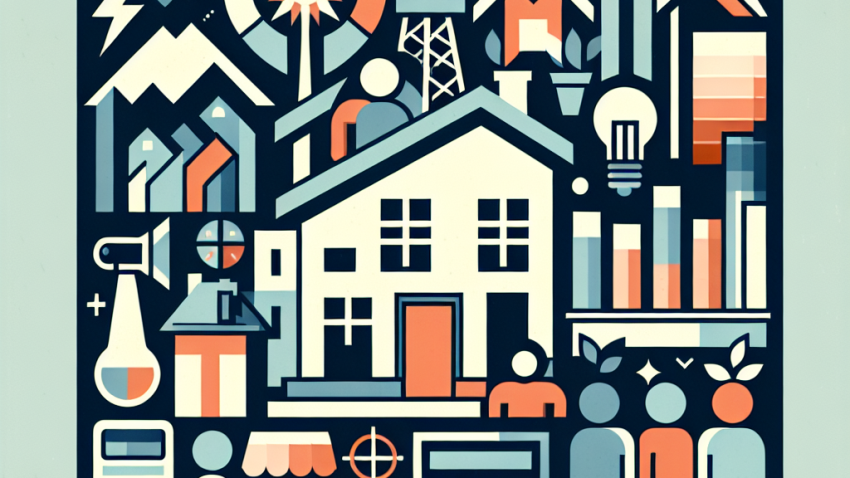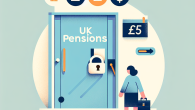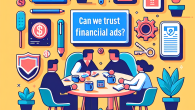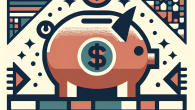
Ofgem, Energy Bills & You: What Regulatory Failure Means for the Average Household
The Hidden Costs of “Buy Now, Pay Later”: What You’re Not Being Told
Ah, the sweet temptation of instant gratification! See a must-have coat online? Click “Buy Now, Pay Later” (BNPL), and it’s on your doorstep before you can say “consumer debt.” But before you check out with your shiny new watch/rug/air fryer, take it from me—Eleanor “Ellie” Cartwright, your resident bulldog for financial fairness—there’s more to BNPL than catchy taglines and deferred payments.
This seemingly harmless way to shop is ballooning into a full-blown policy problem. Let’s lift the lid on what’s really going on with Buy Now, Pay Later services—and why consumer advocates like me are sounding the alarm bells.
What Is “Buy Now, Pay Later” Anyway?
BNPL is a short-term financing option that allows consumers to split purchases into smaller installments, typically interest-free—at least initially. Major players like Afterpay, Klarna, Affirm and even PayPal have jumped into the arena.
The usual format? You buy something—let’s say a $200 pair of headphones. Instead of paying all at once, BNPL lets you pay in four $50 installments over six weeks. Simple, right? Well, yes… on the surface. But as we all know, the surface can be deceiving.
The Surprising Trapdoors Hidden Behind Friendly Interfaces
BNPL is marketed like candy for your brain: low commitment, easy access, and no credit check required. But don’t let the unicorn-colored apps fool you. These services operate with some glaring transparency issues and could impact your financial health more than you realize.
1. It’s Not “Interest-Free” If You Miss a Payment
While most BNPL services give you a no-interest deal if you pay all your installments on time, the moment you miss one, fees can pile up fast. For example:
- Late fees ranging from $7 to $25
- Higher interest rates (up to 30% APR in long-term plans)
- Debt sent to collections agencies if unpaid
These charges sneak up on people who misjudge payment dates or have limited cash flow—often the very people who turn to BNPL in the first place.
2. Zero Regulation = Zero Accountability
The BNPL market is, quite frankly, the Wild West of consumer finance. Unlike credit cards, it’s not subject to the Truth in Lending Act in the U.S. That means:
- No mandatory disclosure of finance charges
- No requirement to report lending practices
- No federal oversight of fee caps or dispute resolution
Translation? You’re relying on the company’s good faith—and their FAQ page.
3. BNPL Can Wreck Your Credit (Without Warning)
Many BNPL companies do not report good payment behavior to credit bureaus (so you don’t build your score), but they do report defaults. You read that right: paying on time won’t help, but missing payments can hurt. It’s a lose-lose scenario for responsible consumers hoping to build credit.
Who’s Most at Risk? Spoiler: It’s Not the Wealthy
The most concerning thing for me as a consumer advocate? BNPL disproportionately impacts marginalized communities, especially:
- Low-income consumers seeking affordability
- Young adults with limited credit access
- People of color who may already face systemic financial barriers
In effect, BNPL preys on hope. It says: “Hey, you deserve nice things too.” And you do. But a future filled with debt collectors and damaged credit scores isn’t fair compensation for a pair of sneakers you bought six months ago.
The Regulatory Vacuum Is a Policy Time Bomb
The Consumer Financial Protection Bureau (CFPB) has finally taken notice, launching multiple inquiries into BNPL practices. But the field is still mostly unregulated, allowing companies to design products that encourage overspending by:
- Putting installment options front and center at checkout
- Offering temptingly low spending limits that gradually increase
- Sending push notifications like “You’re pre-approved for $500 more!”
It’s the gamification of debt, and trust me—we, the consumers, almost never win.
What You Can Do: Advocate, Educate, Regulate
1. Get Educated Before You Check Out
Before clicking that BNPL button, ask yourself:
- Do I really need this item right now?
- Can I afford the full cost today?
- What’s the late fee policy if I miss a payment?
Reading the fine print might not be fun, but neither is an unexpected collections call.
2. Push for Regulation That Protects People, Not Profit
The current lack of oversight is a gift to tech-focused lenders and a minefield for consumers. We need:
- Clear fee disclosures at point-of-sale
- Limits on automated approvals and spending limits
- Requirements to report payments fairly to credit bureaus
- Dispute resolution pathways similar to credit cards
Call your representatives. Sign petitions. Support organizations pushing for financial transparency and advocacy.
3. Share Your Story
Were you burned by a BNPL service? Add your voice to the conversation. Consumer pressure has pushed entire industries toward better behavior—from airline fees to bank overdraft policies. BNPL should be no different.
The Bottom Line: Buy Now, Understand Always
I’m not here to tell you “don’t use BNPL”—I’m here to say “know what it really is.” It’s a form of credit, not a harmless checkout hack. And until we shine a brighter light on how these companies work, millions of consumers are just one click away from financial pitfalls they didn’t see coming.
So take a deep breath. If you can afford it today, pay today. If not, maybe keep scrolling. Because nothing—and I mean nothing—feels less “instant” than debt you didn’t plan for.
Got BNPL nightmares or have questions about consumer rights? Reach out through our contact page. Let’s fight for ethics in fintech, one receipt at a time.









Leave a Reply